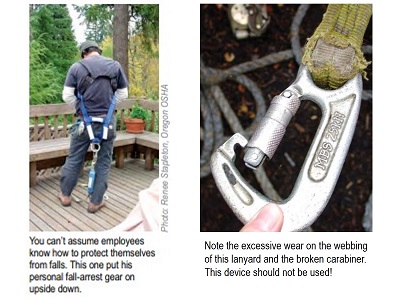Fall hazards are one of the OSHA “Big Four” and remain a leading cause of fatalities in the construction industry. When workers are exposed to serious fall hazards, Personal Fall Arrest Systems (PFAS) are one of the most common and effective forms of protection.
OSHA Standard 1926.503(a)(1) requires employers to provide a training program for every employee who may be exposed to fall hazards. This training must enable workers to recognize fall risks and understand the proper procedures to minimize them.
A typical Personal Fall Arrest System includes three essential components: a secure anchor point, a properly fitted body harness, and a connector such as a lanyard or lifeline. Each part must work together to safely stop a fall.

PFAS equipment must be inspected before each use. Workers should look for any signs of damage, excessive wear, rust, burns, frayed stitching, chemical exposure, or any component that does not function properly. Any piece of equipment showing defects must be removed from service immediately.
OSHA Standard 1926.502(d)(21) reinforces this requirement: Personal fall arrest systems must be inspected prior to each use, and defective components must not be used.
Rusted hardware, damaged connectors, or webbing that has been burned, cut, or soaked in chemicals or paint are all signs that the equipment is unsafe. During inspection, workers should closely examine connectors, snaps, carabiners, rope, webbing, and all hardware used with the system.
PFAS inspections should be documented using inspection tags or other approved forms. A supervisor or competent person should review and record the inspection to verify that equipment remains in safe working condition.

Workers must also be trained in fall protection and the specific Personal Fall Arrest Systems they will be using on the job. Effective training should cover:
- How to properly don and adjust a full-body harness
- The limitations and proper use of fall protection equipment
- How to conduct a thorough PFAS inspection
- What qualifies as a safe anchor point or “tie-off” location

Weeklysafety.com encourages all companies to schedule regular weekly safety meetings covering a wide range of topics throughout the year. These discussions can include anything from walking and working surface hazards to electrical cord safety to seasonal illness prevention.
Consistent training and communication help reinforce safe habits and protect workers from preventable injuries.
.jpg)

